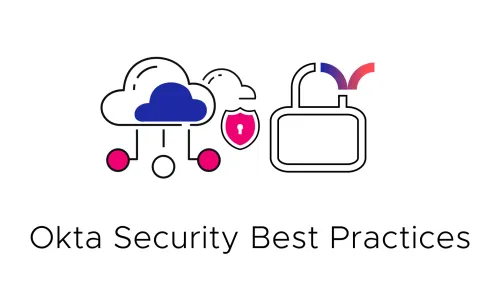In the ever-evolving landscape of identity and access management, Okta stands as a beacon of innovation. One of its essential features, email verification, plays a pivotal role in ensuring secure and convenient user authentication. This comprehensive guide will take you on a journey through the world of Okta email verification, covering its significance, the Okta email verification experience, best practices, and how it can elevate user experiences while maintaining security.
The Significance of Okta Email Verification
Before we delve into the specifics of Okta email verification, let's understand why it holds such importance in the realm of identity and access management.
1. Secure Authentication
Okta email verification serves as a secure method for authenticating users. By confirming their email addresses, Okta ensures that only authorized individuals gain access to protected resources.
2. User Convenience
Email verification is a user-friendly authentication method that leverages a familiar communication channel. Users can easily verify their identities by clicking a link in their inbox.
3. Regulatory Compliance
For businesses and organizations subject to data protection regulations, such as GDPR or HIPAA, email verification helps ensure compliance by adding an extra layer of security to user access.
4. Reduced Support Overhead
With self-service email verification, users can complete the authentication process independently, reducing the need for support or manual verification by administrators.
Now, let's explore the email verification experience within the Okta platform.
The Okta Email Verification Experience
The Okta email verification experience is designed to be straightforward and user-friendly. Here's how it works:
1. User Registration
When a user registers for an account or attempts to access a protected resource, Okta prompts them to provide their email address.
2. Email Verification Request
After the user submits their email address, Okta sends an email verification request to the provided address. This email contains a verification link.
3. User Action
The user receives the email verification request in their inbox. To complete the verification process, they need to click the verification link.
4. Confirmation
Once the user clicks the verification link, Okta confirms the email address's validity. The user gains access to their account or the protected resource.
5. Ongoing Security
Email verification remains an ongoing security measure, ensuring that users can access their accounts securely and recover their credentials if necessary.
Best Practices for Okta Email Verification
To ensure the effectiveness of Okta email verification and maximize its benefits, consider the following best practices:
1. Clear Communication
Design email verification messages to be clear and concise, guiding users through the process and explaining its purpose.
2. User-Friendly Design
Optimize the email verification experience with a user-friendly design. Ensure that verification emails are well-formatted and visually appealing.
3. Timely Delivery
Deliver email verification requests promptly to avoid user frustration. Users should receive these requests in a timely manner to complete the authentication process.
4. Secure Links
Use secure links in verification emails to prevent tampering or unauthorized access. Ensure that links are generated securely.
5. User Education
Educate users about the importance of email verification for their account security. Encourage them to follow best practices for online safety.
Common Questions about Okta Email Verification
Q1: Is email verification the only method Okta offers for user authentication?
No, Okta offers a range of authentication methods, including multi-factor authentication (MFA), adaptive authentication, and more. Email verification is one of the options available.
Q2: Can I customize the email verification experience for my users?
Yes, Okta provides customization options for email verification messages, allowing you to align the experience with your brand identity and messaging.
Q3: Is Okta email verification suitable for all types of applications and services?
Okta email verification is suitable for a wide range of applications and services, from web and mobile apps to APIs and single sign-on (SSO) solutions.
Q4: How does Okta ensure the security of email verification messages and links?
Okta employs industry-standard security measures to protect email verification messages and links, including encryption and secure generation of links.
Q5: Can Okta email verification be used for self-service account recovery?
Yes, Okta email verification can be leveraged for self-service account recovery, allowing users to regain access to their accounts securely.
Q6: Are there regulations that govern the use of email verification in identity and access management?
Yes, data protection regulations may apply to the use of email verification, especially when it involves personal data. Compliance with regulations such as GDPR is essential.
Conclusion
Okta email verification stands as a powerful tool for enhancing user experiences and maintaining security in the realm of identity and access management. By understanding its significance, implementing best practices, and staying informed about regulatory requirements, you can leverage the full potential of Okta email verification to elevate user satisfaction while safeguarding sensitive data. Whether you're a developer, administrator, or business owner, mastering email verification within the Okta ecosystem is a crucial step toward success in the world of secure and user-friendly authentication.



